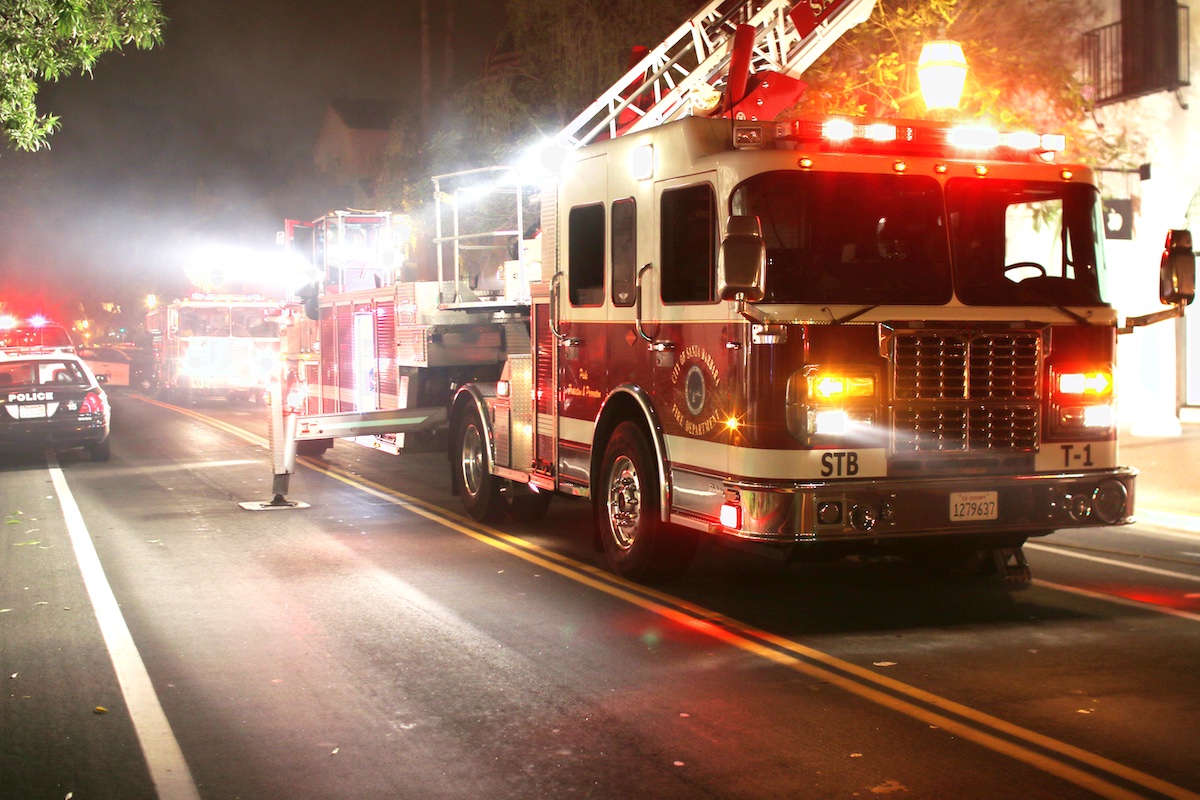Council Rejects Proposed Changes to State Street Promenade
But Does Vote to Widen Center Fire Lane

City staff gave downtown business owners a good scare earlier this month when they announced major changes could soon be coming to the State Street promenade. On the table was an ordinance that would widen the street’s center fire lane, reopen certain areas to cars, and require all parklets be “portable,” meaning able to be broken down and moved with 24 hours’ notice. The changes were needed, they argued, to improve traffic flow, accommodate upcoming capital projects like bike lanes, and ensure a regular cleaning and maintenance schedule.
But after significant pushback from the business community — including the owners of Opal, bouchon, and The Good Lion, as well as the directors of the South Coast Chamber of Commerce and Downtown Santa Barbara, who all argued at Tuesday’s City Council meeting that the proposed new rules were sprung on them with virtually no notice — the council voted unanimously to only widen the fire lane. The other elements of the ordinance, they decided, ought to be delayed until further discussion with stakeholders can be conducted.
Councilmember Michael Jordan, who normally defends city staff when they’re publicly criticized, agreed with business operators this time that a serious failure of communication had occurred. The outreach, or lack thereof, was “one of the worst efforts I have witnessed” in nearly 13 years on the Planning Commission and City Council, he said.
Jordan pointed specifically to the notices that were handed out two weeks ago “to whomever was at the business that day, whether it was a server, an owner, a dishwasher, whatever.” That was “unacceptable,” he said. If Santa Barbara wants to consider itself a “full-service” city, Jordan insisted, it needs to improve not only its external messaging but its internal communications, as even he didn’t learn of the ordinance until the 11th hour.
Like the rest of his colleagues, however, Jordan agreed the promenade’s fire lane needed to be expanded from its current width of 14.5 feet to the 20 feet mandated by California fire code. Santa Barbara’s Fire Marshal, Ryan DiGuilio, had explained to the council that while his department was initially amenable to the narrower route as the pandemic bore down and emergency measures were needed to save downtown businesses, “The comfortability factor has run out. The liability we’re taking on is a real concern for us.”
Sign up for Indy Today to receive fresh news from Independent.com, in your inbox, every morning.
DiGuilio displayed photos of fire engines and a ladder truck pinched for space as they responded to recent incidents, and he discussed how a commercial fire could draw more than a dozen emergency vehicles to the scene. “That all takes room,” he said, “and it takes lots of room.”
The expansion, DiGuilio said, would mean State Street parklets couldn’t extend more than nine feet from the curb. If the parklet is adjacent to a crosswalk, the limit would be six feet. He also asked that total clearance be granted in front of the Balboa Building, The Granada Theatre, and at 820 State Street, the four-story building that houses LogicMonitor.
Councilmember Eric Friedman acknowledged Jordan’s frustrations but also noted “the incredibly tough time staff has had in the last year.” There’s been a lot of turnover, he said, particularly among higher-level positions, and the council itself has “not done a good enough job” in prioritizing the heavy workload it delegates. Yes, staff can do better, Friedman said, “but they’re learning.”
Mayor Randy Rowse, presiding over his first council meeting since being sworn in earlier this month, said while he agreed the bulk of the ordinance was being pushed too fast too soon, it’s important to keep asking “the adult questions” about the future of State Street. “This is a major planning effort,” he said. “We can’t just take the public right of way and distribute it however we want.” At the moment, Rowse said, he sees “a lot of inequities.”
Councilmember Meagan Harmon, a member of the newly formed State Street Advisory Committee, said the issues discussed Tuesday can and should be hammered out, but deliberately and cooperatively, not suddenly and unilaterally. The promenade’s success over the last two years “was premised on our commitment as a city for collaborative engagement with stakeholders,” she said, and that ought to continue. “We finally have scaffolding in place to make the promenade a permanent reality,” she said.
Support the Santa Barbara Independent through a long-term or a single contribution.



